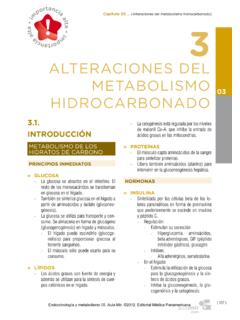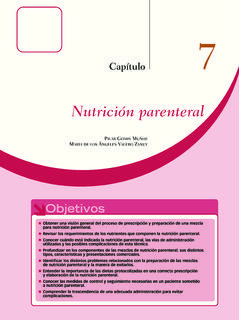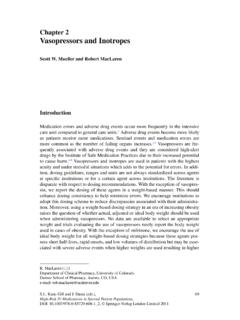Transcription of The Nature of Theoretical Thinking in Nursing - Axón
1 The Nature ofTheoretical Thinkingin NursingThird EditionHesook Suzie Kim, PhD, RN, has been professor at the University of Rhode Islandsince1979andProfessorIIattheInstit uteofNursingScience,FacultyofMedicine,Un iversity of Oslo in Norway from 1992 to 2003. She is professor emerita ofnursing at the University of Rhode Island, from which she retired in 2004, andhas held the professorship at Buskerud University College in Norway from 2004to 2008. Currently she is a research project director at Buskerud University Kim began teaching at the University of Rhode Island in 1973 and was deanof the College of Nursing there from 1983 to 1988. She holds a doctorate insociology from Brown University, and Nursing degrees (BS and MS) from IndianaUniversity. She has published extensively in the area of Nursing epistemology,theory development in Nursing , the Nature of Nursing practice, and collaborativedecision making in Nursing practice as well as in various areas of clinical nursingresearch.
2 She is also the coeditor with Dr. Ingrid Kollak of Berlin, Germany, of thebook, Nursing Theories: Conceptual and Philosophical Foundations,thefirsteditionof which was published both in English and in German in 1999 and the secondedition (in English) in Nature ofTheoretical Thinkingin NursingThird EditionHESOOK SUZIE KIM, PhD, RNNewYorkCopyright 2010 Springer Publishing Company, LLCAll rights part of this publication may be reproduced, stored in a retrieval system, or transmitted inany form or by any means, electronic, mechanical, photocopying, recording, or otherwise,without the prior permission of Springer Publishing Company, LLC, or authorizationthrough payment of the appropriate fees to the Copyright Clearance Center, Inc., 222 Rosewood Drive, Danvers, MA 01923, 978-750-8400, fax 978-646-8600, or on the Web at Publishing Company, LLC11 West 42nd StreetNew York, NY Editor: Allan GraubardSenior Editor: Rose Mary PiscitelliCover design: Steve PisanoComposition: International Graphic ServicesISBN: 978-0-8261-0587-5 Ebook ISBN: 978-0-8261-0588-210111213/54321 The author and the publisher of this Work have made every effort to use sources believedto be reliable to provide information that is accurate and compatible with the standardsgenerally accepted at the time of publication.
3 Because medical science is continuallyadvancing, our knowledge base continues to expand. Therefore, as new information be-comes available, changes in procedures become necessary. We recommend that the readeralways consult current research and specific institutional policies before performing anyclinical procedure. The author and publisher shall not be liable for any special, consequen-tial, or exemplary damages resulting, in whole or in part, from the readers use of, orreliance on, the information contained in this book. The publisher has no responsibilityfor the persistence or accuracy of URLs for external or third-party Internet Web sitesreferred to in this publication and does not guarantee that any content on such Web sitesis, or will remain, accurate or of Congress Cataloging-in-Publication DataKim, Hesook Nature of Theoretical Thinking in Nursing / Hesook Suzie Kim.
4 3rd ; bibliographical references and 978-0-8261-0587-5 (alk. paper)1. Nursing Title. [DNLM: 1. Nursing Theory. 2. Models, Nursing . 3. Philosophy, Nursing . WY86 K49n 2010] 01 dc222010012488 Printed in the United States of America by Hamilton PrintingFor HyungContentsPreface ix1 Introduction 12 Terminology in Theoretical Thinking 193 Nursing Epistemology 414 Conceptual Domains in Nursing :A Framework for Theoretical Analysis 595 Theoretical Analysis of Phenomenain the Client Domain 856 Theoretical Analysis of Phenomenain the Client Nurse Domain 1377 Theoretical Analysis of Phenomenain the Domain of Practice 1698 Theoretical Analysis of Phenomenain the Domain of Environment 2199 Theory Development in Nursing 26710 Concluding Remarks:Issues in Theoretical Development in Nursing 297 Bibliography 305 Index 335viiPrefaceIt has been more than 25 years since the publication of the first edition,and nearly 10 years since the second edition of this work.
5 During thisperiod, Nursing as a scientific discipline has achieved a great deal interms of the development of knowledge. There especially has been atremendous growth and enrichment in Nursing s Theoretical work. Sev-eral grand theories and conceptual models that were initially presentedby the early 1980s have been revised, reformulated, and refined eitherby the original theorists or by their great deal of Nursing s Theoretical work also has focused on thedevelopment of middle-level theories. In addition, there has been asignificant growth in the delineation, clarification, and refinement ofconcepts in Nursing from various perspectives. Furthermore, duringthe last 2 decades serious debates and discussions on the epistemologicaland other philosophical underpinnings of the development of knowl-edge in Nursing began in earnest.
6 As a discipline, Nursing is evolvinginto a mature knowledge system that is clarifying its subject matterand the problems it faces as a , because Nursing , as a knowledge system, has embracedpluralism not necessarily by design butde facto, it continues to strugglewith what this means, especially in terms of making Nursing knowledgerelevant to Nursing practice. My hope here, in this third edition, is toshed some light on how we are dealing with pluralism as well asaddressing Theoretical issues in we have advanced in developing Nursing concepts andtheories, we are still engaged with the Theoretical clarification of essentialfeatures of the phenomena of interest to Nursing , with their conceptual-izations, and with theorizing about them. There still are enough tensionsin the field that call for an integrated approach to Theoretical thinkingin Nursing .
7 As has been my position from the first edition of this book,I intend to provide conceptual tools for use in delineating the worldof Nursing in Theoretical serious student or scholar concerned with Theoretical work innursing would ask, at one time or another: What is Nursing concernedwith in a Theoretical sense? It seems that for one to answer this questionsatisfactorily, it is necessary to have a systematic framework for theanalysis of Theoretical elements in the field of this book, I propose a systematic framework that can be usedto examine elements in the field of Nursing and to posit importantconcepts in a system of order and within a boundary of specific purpose is to enhance understanding about how conceptualizationsand Theoretical statements are developed and refined in Nursing whileoffering, at the same time, a typology of conceptual domains that canbe used to delineate Theoretical elements essential to Nursing .
8 In thisthird edition, I have retained the previous typology of four domains thedomain of client, the client nurse domain, the domain of practice, andthe environment domain as the way to structure conceptual fields fornursing, incorporating further clarifications and current advances. Ibelieve this typology, as a conceptual mapping device, is a useful analytictool for delineating and theorizing about phenomena of interest tonursing, as it has done for many students and scholars in Nursing sinceits initial have added a new chapter on the Nature of Nursing epistemology,to address critical issues pertaining to pluralism in knowledge develop-ment in Nursing . In the 21st century, we must work toward theoreticaladvances in Nursing within a synthesizing framework that can consoli-date and sort out the multifaceted and complex Nature of knowledgerequired for Nursing as a discipline and a practice.
9 Taken together, theframework for Nursing epistemology, as presented here, and the typol-ogy of four domains should become a map for developing and systema-tizing Theoretical works in Nursing . This is especially important inproviding Nursing knowledge with a critical heuristic value for nurs-ing book is primarily designed for graduate students in nursingwho are struggling with conceptualization and the Theoretical analysisof Nursing phenomena. However, many colleagues have shown that itis also useful in introducing undergraduate students to Nursing concep-tualizations. I believe it is important to introduce senior-level nursingstudents to Theoretical Thinking in Nursing , so that they are able toappreciate and recognize Nursing knowledge as a systematized workfor Nursing practice.
10 My goal is to show how empirical elements in theworld of Nursing are translated into Theoretical terms and, in turn, howtheoretical concepts articulate the real world of such, the specification of concept delineation is proposed alongwith the typology. The book also shows how various forms of theoreticalexpositions may be used in Theoretical Thinking in I discuss and analyze many conceptual and theoreticalideas expressed by Nursing theorists, namely, Rogers, Roy, Johnson,Orem, and King, I do not make systematic evaluations of the valuesand applicabilities of their Theoretical systems. I have attempted neitherto evaluate nor to criticize theories, whether in Nursing or from otherfields, in a systematic or comprehensive manner, as that is not my aimin this book. I have included those appropriate aspects of Nursing (andother) theories mainly to illustrate, expand, and apply the ideas underdiscussion.









